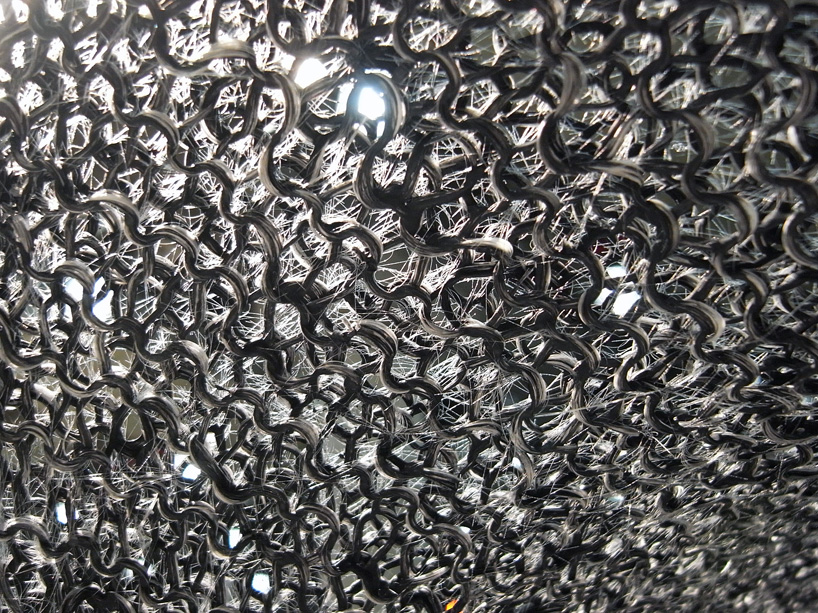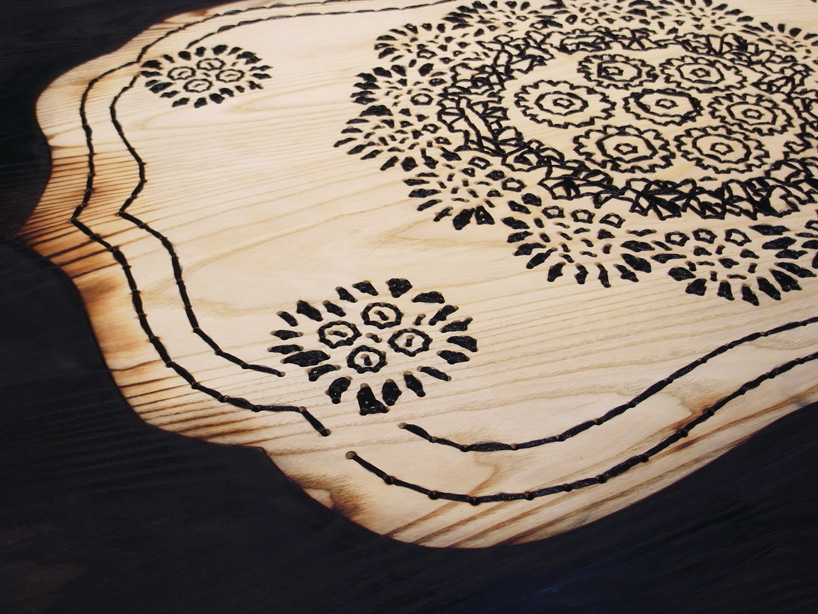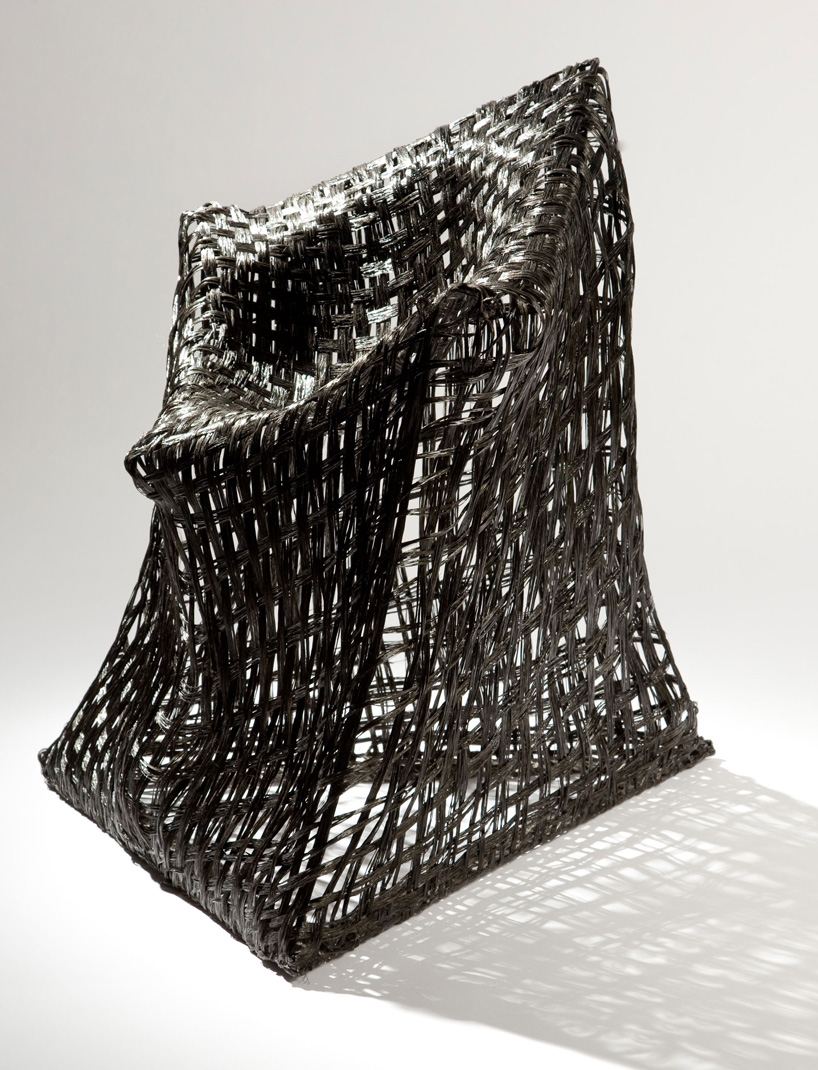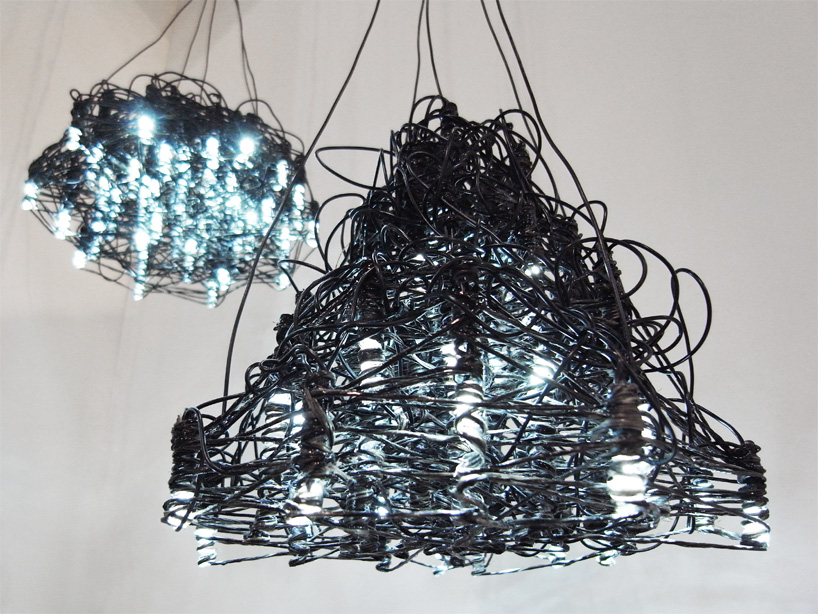‘fu lei zhi’ by vivian chiu
existing composites rely heavily on irreversible resins, which cannot be recycled. twintex®, a commingled glass and thermoplastic polypropylene fiber filament, is solidified by a reversible heat treatment. as a result, twintex® products can be recycled, thereby presenting an environmentally friendly alternative to conventional composites.
in a developmental research process, students of the rhode island school of design (RISD) explored this new recyclable thermoplastic compound and created furniture and lighting fixtures through a project called ‘recycled composites’. each work is an attempt at pushing the boundaries of both design and customary manufacturing techniques, whilst following principles of sustainability.
‘fu lei zhi’ by vivian chiu, is a bench made by wrapping twintex® around a wooden mold to create a weave structure. each half is made of eight layers of twintex® that converge at the bottom corners. when the material is heated, the plastic melts and acts as a bonding agent. this design is an experiment in the structural ability of the material and focuses on the negative space created by the weave patterns.
 ‘practical table’ by elizabeth moranfull
‘practical table’ by elizabeth moranfull
the ‘practical table’ by elizabeth moranfull was constructed in a similar manner as chiu’s, by wrapping the twintex® compound randomly around a wooden mold. still on the frame, the table was was placed in an oven to allow the polypropylene to melt. the mold is then removed from the interior, leaving only the finished twintex® form.
 detail of ‘practical table’ by elizabeth moranfull
detail of ‘practical table’ by elizabeth moranfull
 ‘perm chair’ by eun sang ernie lee
‘perm chair’ by eun sang ernie lee
eun sang ernie lee gave his ‘perm armchair’ the same fluffiness and texture as his conceptual starting image, his grandmother’s hair. twintex® is first woven onto a geometric wooden mold and curled at ambient temperature, so the chair comes out from a machine looking like loosely curled locks after a perm treatment. the seat and the back are flexible and cushioned, while the fibrous and hollow structure supports the weight of a human body.
 ‘perm chair’ by eun sang ernie lee image © designboom
‘perm chair’ by eun sang ernie lee image © designboom
video of the making process
 ‘saddle stool’ by alexandra snook
‘saddle stool’ by alexandra snook
regarding her ‘saddle stool’, alexandra snook explains:
‘twintex® is a thread of sorts, so I initially examined the ways in which we use conventional threads and yarn – sewing, crocheting and knitting. when I was six years old, my grandmother taught me to knit; I went to her house after school and we would knit together on an old grey wool couch. knitting was always kept separate from my work as a designer, but working with twintex® excited me to finally incorporate it into my furniture. since twintex® has the unique feature of hardening through baking, I was able to use knitting in a more structural way than would otherwise be possible in creating saddle stool.‘
 close-up of the ‘saddle stool’ image © designboom
close-up of the ‘saddle stool’ image © designboom ‘entrapment table’ by misha kahn
‘entrapment table’ by misha kahn
interested by the scene in the film ‘entrapment’ in which sean connery makes catherine zeta-jones climb through a web of yarn, misha kahn sought a way to enable the yarn-like material of twintex® to take on a structural form through embroidery.
 detail of the ‘entrapment table’ surface image © designboom
detail of the ‘entrapment table’ surface image © designboom
 ‘poke chair’ by megan callahan
‘poke chair’ by megan callahan
the ‘poke chair’ by megan callahan makes use of the malleability of the material when in its heated state. the chair’s sunken form pokes inward to create a seating surface.
 ‘light scribble’ by jiwon choi image © designboom
‘light scribble’ by jiwon choi image © designboom
the idea for the ‘light scribble chandelier’ by jiwon choi derives from pencil scribbles on paper, through which choi hung multiple lighting fixtures.
—
lead by assistent professor lothar windels, ‘recyclable composites’ is made up of 12 individual works by RISD students. see all the other projects here.





